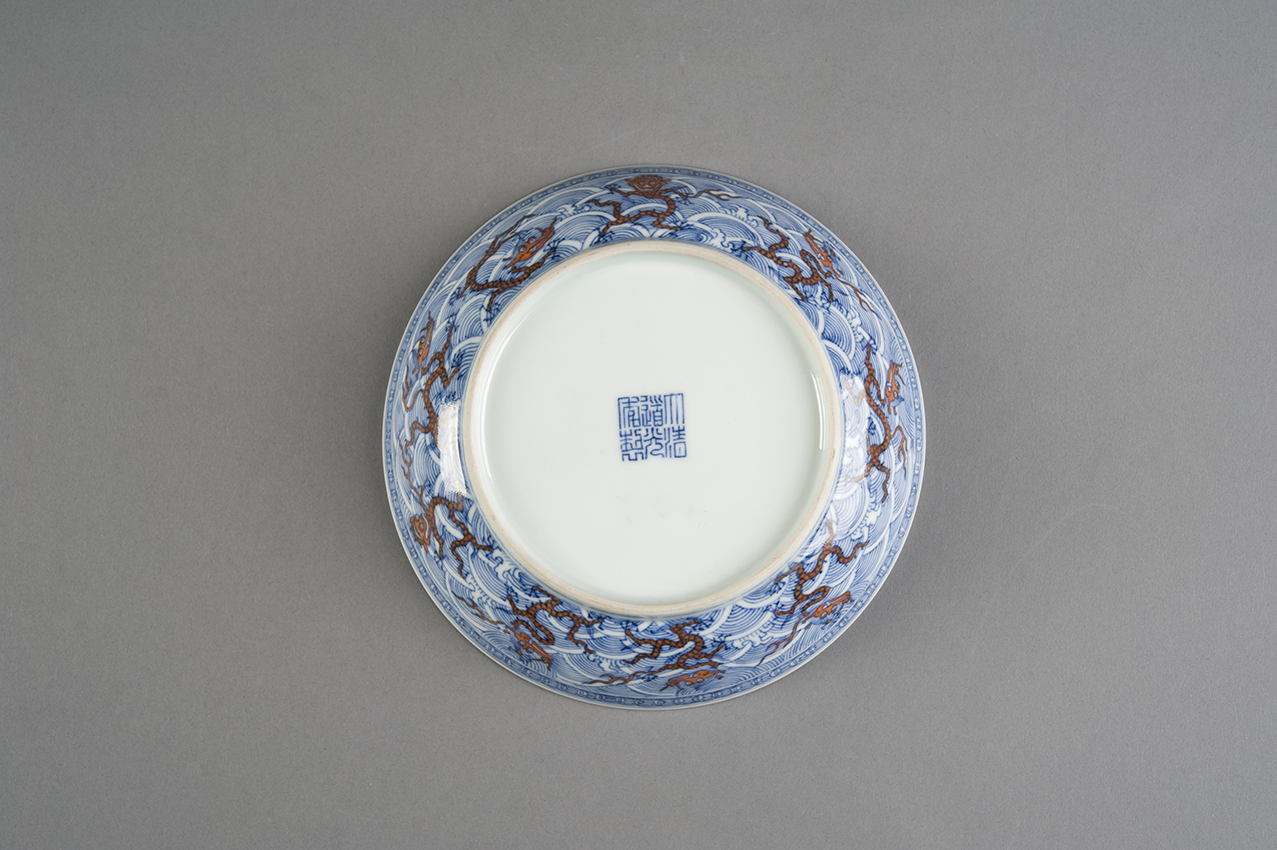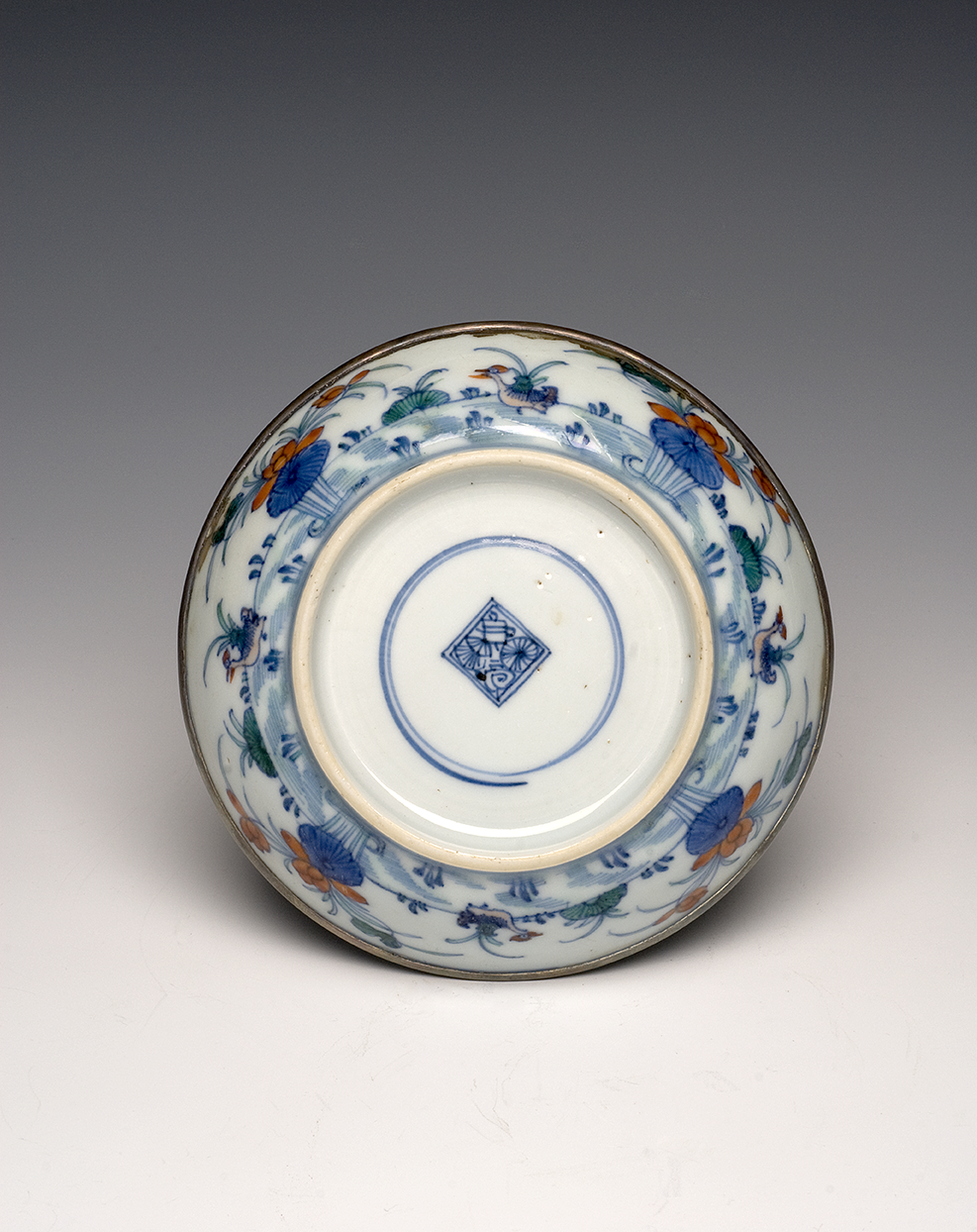Marks
Marks
Beginning in the Ming dynasty, Chinese emperors were usually referred to by their reign era, not their given names. Accordingly, the form ‘the Qianlong emperor’ is followed rather than ‘Emperor Qianlong’, as ‘Qianlong’ is the reign era.
Many different marks can be found on Chinese ceramics. The most prevalent in Objectifying China are imperial marks found on pieces for the court and related institutions used from the Ming dynasty onwards. They usually consist of six characters (sometimes four) in two rows read from right to left and from top to bottom, or in seal script within a square. The first two characters indicate the dynasty (for instance Da Ming, ‘the great Ming dynasty’). The next two give the name of the ruling emperor; for example, Jiajing or Wanli. The last two characters mean ‘made during the period of’ (nian hao). Imperial Ming and Qing marks also occur on non–imperial wares and export porcelain. It is important to note that the presence of reign marks does not necessarily indicate a date of production. Marks from previous eras were often inscribed on later porcelain as a sign of respect, and acknowledgement of borrowed designs, as well as a means to increase value.
Other character and seal marks may have many different meanings: a wish for good luck, a date, a quality comparison, an owner or factory, or an indication for use in a specific setting. Individual potter's marks rarely appear on Jingdezhen porcelain, but they do occur more frequently on porcelain from Dehua. Marks are usually found on the bottom of a piece, sometimes on the edge or shoulder, or in the centre.

